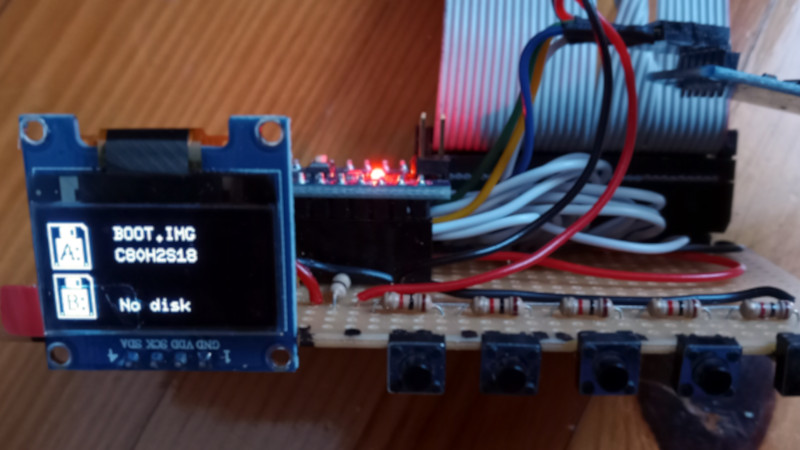Source: The Week: Most Recent Home Page Posts
FDA OKs Moderna and J&J boosters, plus 'mix and match' approach
Source: The Week: Most Recent Home Page Posts
FDA OKs Moderna and J&J boosters, plus 'mix and match' approach
Source: Hack a Day

On October 19th, [Seth_h] from the KiCad Project posted on the KiCad forums that the project’s original domain name kicad-pcb.org has been unexpectedly sold to a third party, and urged members of the community to avoid any links to this old website.
KiCad has used the domain kicad-pcb.org since 2012 as the official source for information on and downloads of their popular open-source electronics design software. Unfortunately, the original domain name was purchased before KiCad was formalized as an organization, so it was not directly under their control. This all came to head when the old domain name was unexpectedly sold to an unnamed third party that was not affiliated with the project. Currently, the old domain is just a website covered in ads, but the KiCad team fears that it may be used maliciously in the future.
With KiCad’s popularity, thousands of tutorials, articles, and project guides over the years have included links to the old KiCad domain. A Google search in October 2021 found more than 19,000 instances of the old domain spread across the internet. [Seth_h] has called upon the community to make every effort possible to update old links, reducing the chance that people stumble across the wrong website.
[Editor’s Note: We think we got ’em all, let us know if we missed any.]
Luckily, Digikey has swooped in to help save the day. They purchased a new domain, kicad.org, from squatters and donated it to the KiCad Project. [Seth_h] explains in his post that a number of safeguards have been put in place to prevent this from happening in the future, including not having the domain name owned by a single person, and having all KiCad trademarks registered to the Linux Foundation.
There’s a good reason why KiCad has gotten so popular, it is packed full of great features for PCB design. Check out our coverage of some of the new features we are most excited for in KiCad 6.0 here.
Source: Hacker News
Source: Hacker News
CommentsSource: Ars Technica

Enlarge / The new MacBook Pro. (credit: Apple)
Nearly a year after announcing the first low-end M1 Macs last November, Apple has finally unveiled an update for its higher-end laptops. New 14-inch and 16-inch MacBook Pro models will include the M1 Pro and M1 Max chips, faster successors that build upon the foundation of the original M1, as well as more ports and a slight redesign. This marks the most significant change to the MacBook Pro since the Touch Bar was introduced back in 2016.
Both MacBook Pro models will be available for order today, and they'll begin shipping next week. The 14-inch model starts at $1,999, which will get you a version of the M1 Pro with an eight-core CPU and 14-core GPU, 16GB of RAM, and 512GB of storage. The 16-inch model will start at $2,499, which includes the full version of the M1 Pro, with a 10-core CPU and 16-core GPU, 16GB of RAM, and 512GB of storage. Color options remain relatively staid: you can get silver or space gray, but not the rainbow of color options you get with the 24-inch iMac.
The 16-inch MacBook Pro uses a 16.2-inch display with a 3456×2234 pixel resolution, while the 14-inch model uses a 14.2-inch display with a 3024×1964 resolution. Both screens use mini LED backlighting and slimmer bezels almost all the way around the screen, albeit at the expense of an iPhone-style display notch at the top of the screen for the improved 1080p webcam. Both screens also support Apple's ProMotion feature, increasing the typical 60 Hz refresh rate up to a smoother 120 Hz.
Source: Hack a Day

Among the plethora of obsolete removable media there are some which are lamented, but it can be difficult to find those who regret the passing of the floppy disk. These flexible magnetic disks in hard plastic covers were a staple of computing until some time in the early 2000s, and their drives could be found by the crateload in any spares box. But what about today, when there’s a need for a real floppy drive and none is to be found? Enter [Acemi Elektronikci], with an Arduino Nano based floppy emulator, that plugs into the floppy port of a PC old enough to have one, and allows the easy use of virtual floppy disks.
Aside from the Nano it has an SD card and associated level shifter, and an SSD1306 i2c screen. Most of the Arduino’s lines drive the floppy interface, so the five-button control comes to a single ADC pin via a resistor ladder. He freely admits that it’s not a perfect cycle-exact emulator of original hardware and there may be machines or even operating systems that complain when faced with it, but for all that it is a useful tool. One of the machines that may have issues is the Amiga, but fortunately there’s a fix for that with a Raspberry Pi.
Source: Hacker News
Source: Hacker News
Source: Hacker News
Source: Hacker News